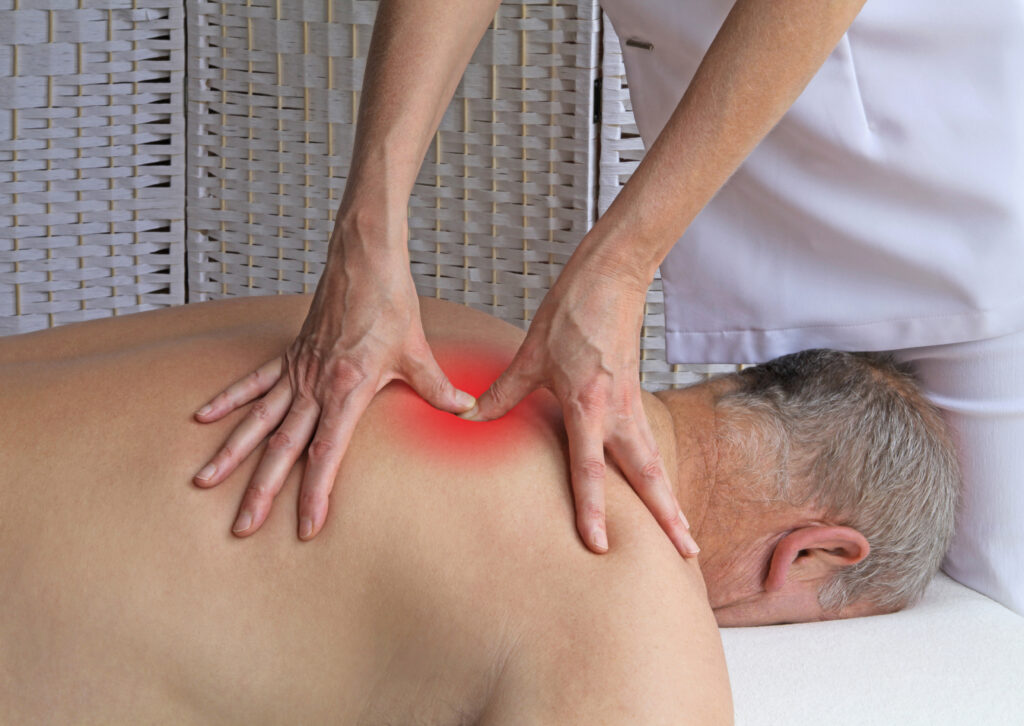Myofascial Release / Trigger Point Therapy Overview
Myofascial release is a specialized, soft tissue therapy that works on alleviating fascial restriction to provide pain relief, increase your range of motion and balance your body for optimum movement and posture.
It’s based on the ‘single muscle’ theory in that everything in your body is connected by the fascia. There are lines of fascia that run throughout the body, which help it to move as a unit.
Myofascial pain has multiple components and presents itself in many conditions, diseases, syndromes and injuries that result in fascial restriction and trigger points which cause immediate pain and effects that can linger far into the future.
Unlike massage, which works on relieving stress and tension – Myofascial release works specifically with the connective tissue (fascia) to relieve the tightness that causes muscle restrictions.
WHAT IS MYOFASCIAL PAIN
Myofascial pain is a condition that affects the fascia and muscles. Skin, muscles, tendons and ligaments often become stiff, sore, and tight and inflamed following an injury or trauma, causing postural imbalance. Pain in one area of the body often originates in another location entirely. The exact location within the anatomy where the pain originates is referred to as a trigger point and it can be manipulated through myofascial release techniques.
Symptoms may appear immediately or even years later and patients may not associate the original injury with the current pain.
Myofascial techniques are beneficial for conditions ranging from migraines and TMJ pain to lumbar problems, fibromyalgia and carpal tunnel.
Chronic fatigue syndrome, mastectomy pain and neurological dysfunction can all be addressed successfully with myofascial release to relieve pain, improve mobility and reduce disabling conditions.
BENEFITS OF MYOFASCIAL RELEASE / TRIGGER POINT THERAPY
- Reduce pain
- Release tension knots/trigger points
- Improve range of movement and flexibility
- Improve muscle function
- Enhance circulation by breaking up the tight areas where blood flow may become restricted
- Reduce exercise-related soreness
WHAT IS INVOLVED IN AN APPOINTMENTS?
In a session the consultant listen to your pain complaint – be it acute or chronic. A detailed examination on you will be conducted – looking at your posture sitting, standing, a gait analysis and lying down. You will be asked specific questions about your home or work environment, your health habits and activity level, and your leisure and recreational interests in order to help you become as pain free and as active as possible.
A session is minimum of 20 minutes. It’s also important to know that all clients have different reactions to myofascial release but you could experience nausea, extreme tiredness, ‘run over by a bus feeling, or a complete increase of energy and emotional changes.
It is important to note that it may well take more than 3 sessions to get you back to your normal, and we recommend chiropractic manipulation in-between sessions. Stretching, moving, and drinking water to assist in restoring fascial fitness is also very important for your recovery process.


